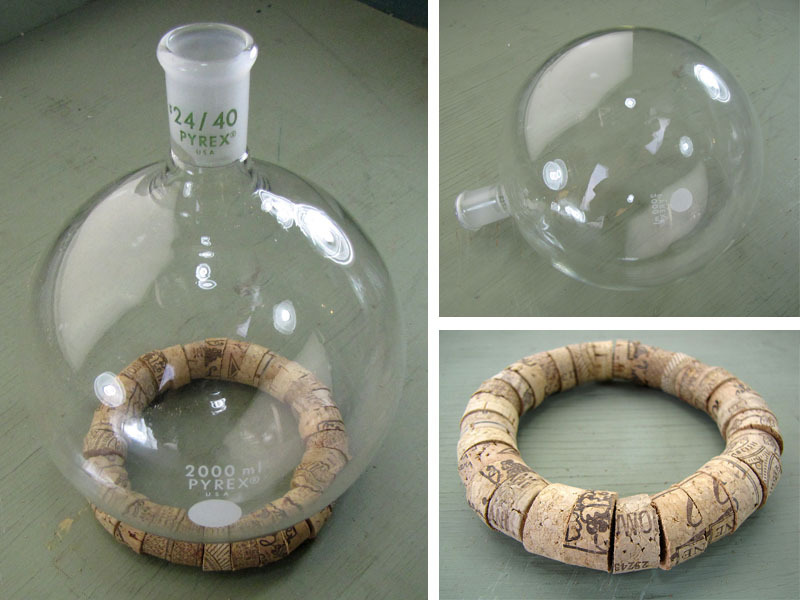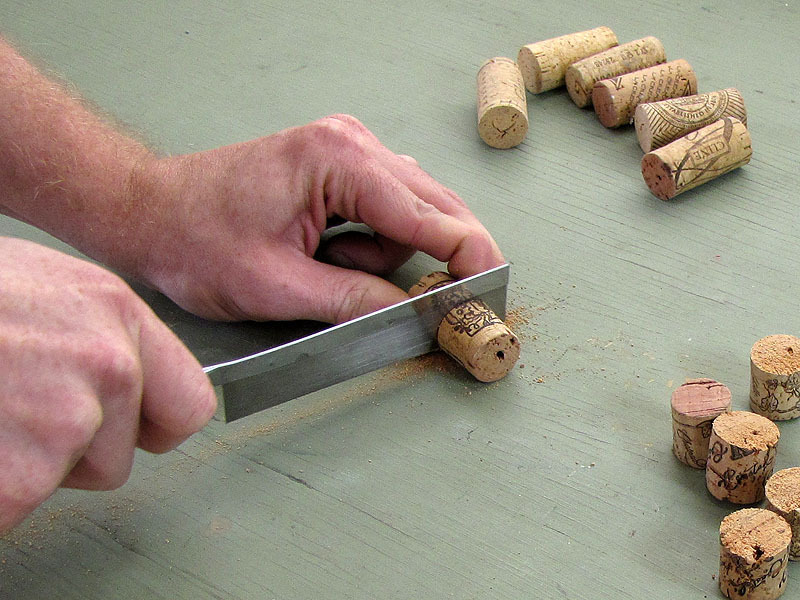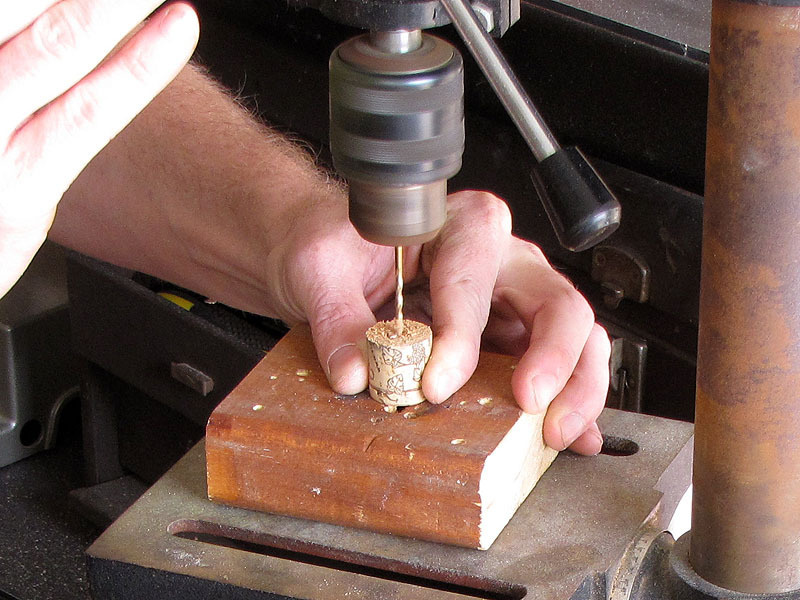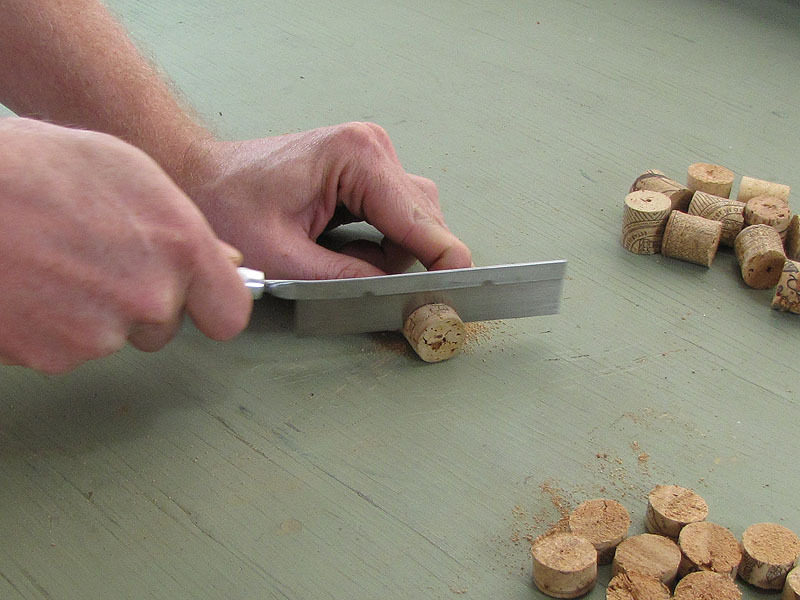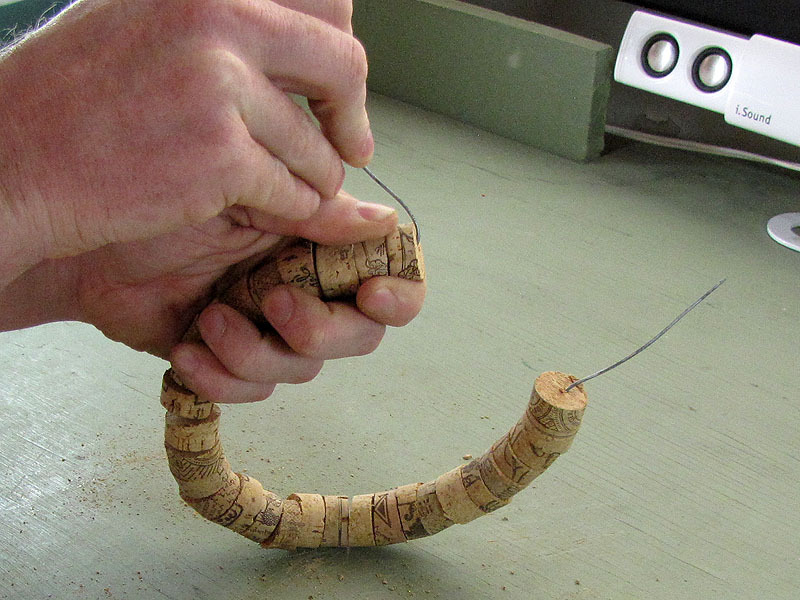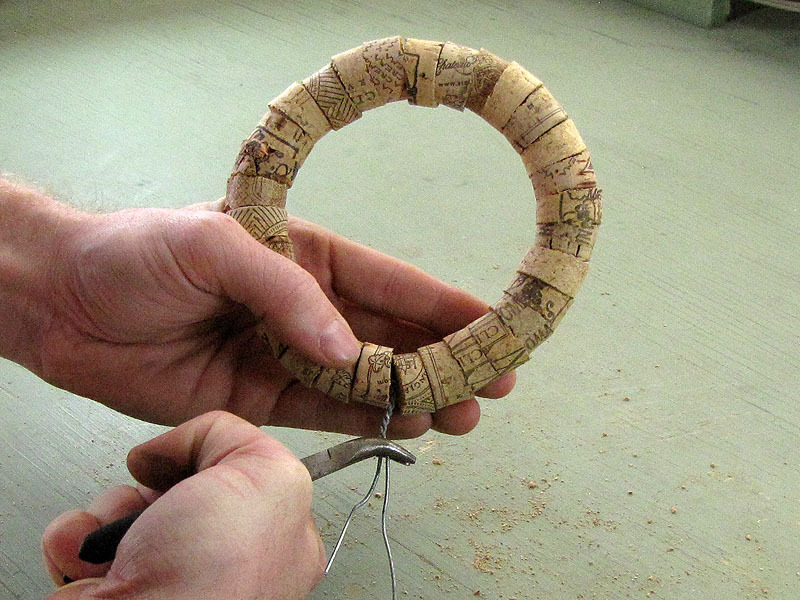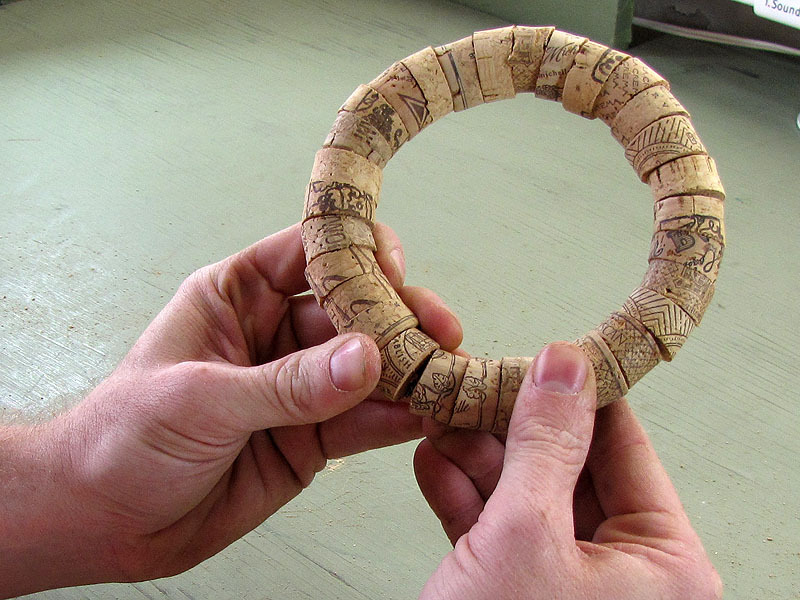Round-bottom flasks offer many advantages for chemical work that requires heating a liquid, but suffer from a major storage and handling drawback: They don’t sit flat on a work surface. The common solution is to equip the bench with one or more cork rings that the flasks can sit in, as shown, to cushion them and keep them upright.
Like most lab equipment, however, purpose-made cork rings are surprisingly expensive. If you’re a hobby or amateur chemist (or just a really frugal one) you might reasonably prefer to save the money you’d otherwise spend buying “pro” grade cork rings to spend on other equipment, especially when it’s so easy to make your own cork rings from cast-off wine corks using this classic method.



